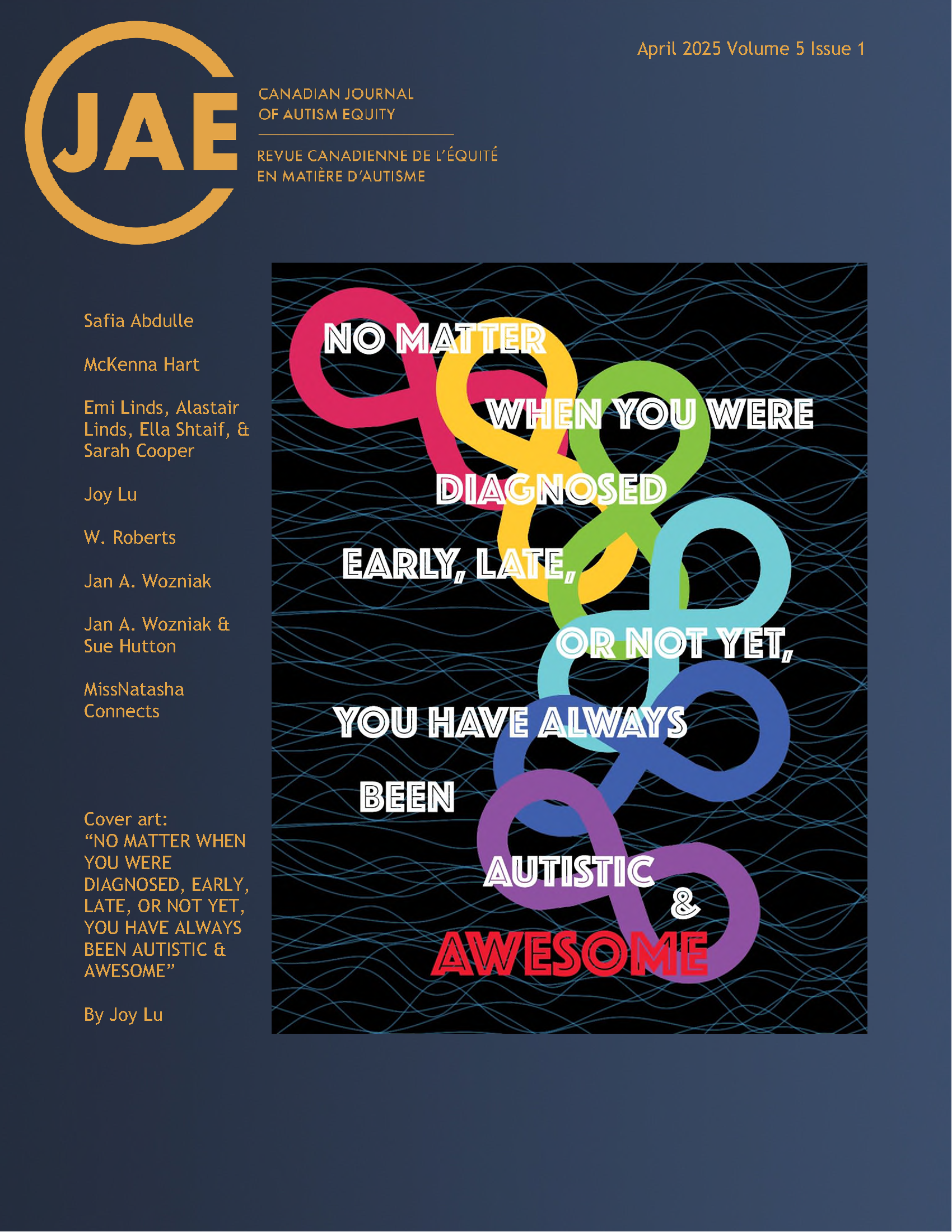What's in a name?
A story of two diagnoses, and why the words we use matter when it comes to mental health
DOI:
https://doi.org/10.15173/cjae.v5i1.5967Keywords:
misdiagnosis, bipolar disorder, autism, identity, inclusive nomenclatureAbstract
Abstract: This essay reflects on my mental health journey that began when I first received a diagnosis of bipolar II disorder at age 18. After countless ineffective treatments and conflicting diagnoses over the course of my young adult years, by the time I was 23, I feared that my condition would never improve. However, a family members’ autism diagnosis prompted me to pursue an assessment myself. After two years on a waitlist, I received a diagnosis of Level 1 Autism Spectrum Disorder, which changed my perception of myself and led to a massively improved quality of life. This transformative experience showed me the importance of informed and compassionate care, and the need for a more nuanced understanding of mental health conditions and the language used to describe them.
References
American Psychiatric Association. (2013). Diagnostic and statistical manual of mental disorders: DSM-5. (5th Edition). American Psychiatric Association. https://doi.org/10.1176/appi.books.9780890425596
Levine, H. (2024, December 3). Autism: The challenges and opportunities of an adult diagnosis. Harvard Health. https://www.health.harvard.edu/mind-and-mood/autism-the-challenges-and-opportunities-of-an-adult-diagnosis
Zwaigenbaum, L., Brian, J. A., & Ip, A. (2019). Early detection for autism spectrum disorder in young children. Paediatrics & Child Health, 24(7), 424–432. https://doi.org/10.1093/pch/pxz119
Downloads
Published
How to Cite
Issue
Section
License
Copyright (c) 2025 McKenna Hart

This work is licensed under a Creative Commons Attribution-NonCommercial-ShareAlike 4.0 International License.
Authors retain copyright and grant the journal the right of first publication with the work simultaneously licensed under a Creative Commons Attribution License that allows others to share the work with an acknowledgement of the work's authorship and initial publication in this journal.
Authors are able to enter into separate, additional contractual arrangements for the non-exclusive distribution of the journal's published version of the work (e.g., post it to an institutional repository or publish it in a book), with an acknowledgement of its initial publication in this journal.
CJAE accepts articles that have not been published in any other journals/proceedings, unless copyright permission is assured, and have not been submitted for consideration to any other journals/proceedings at the time of submitting to the Canadian Journal of Autism Equity for consideration. While a paper is under consideration by CJAE, you agree not to submit the work to other journals/proceedings until review by CJAE is completed and a decision has been rendered.



